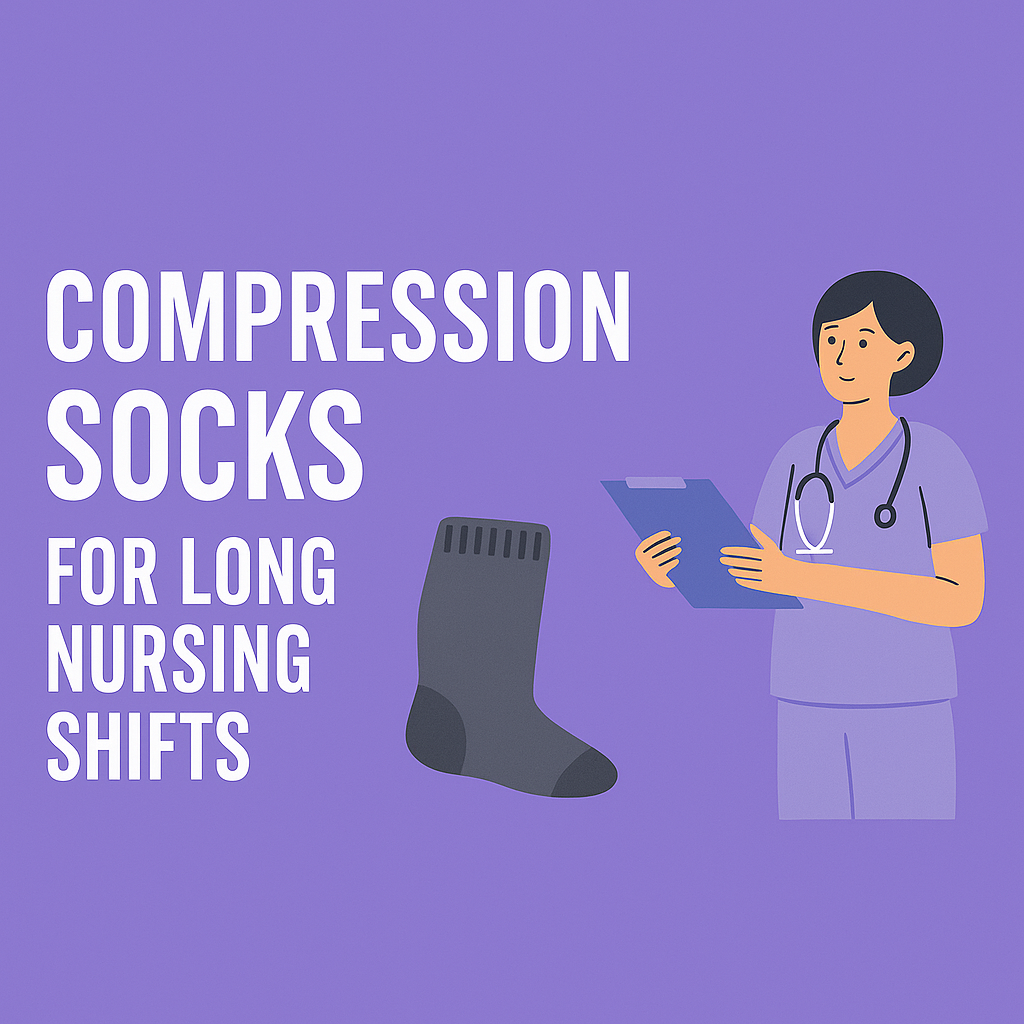
How to Choose Compression Socks for Long Nursing Shifts
If you’re a nurse you already know that long shifts aren’t just part of the job—they’re a way of life. But staying focused, agile, and pain-free for 10, 12, or even 16 hours straight requires more than just mental strength.
The right gear matters—and when it comes to foot and leg health, compression socks for nurses are a game-changer.
But with so many options out there, what compression socks should nurses wear? Let’s walk through exactly what to look for so you can find compression socks that work as hard as you do.
Start with the Right Compression Level
When choosing compression socks for nursing, the level of compression matters—but you don’t need to overcomplicate it. For the vast majority of nurses, 15–20 mmHg is the optimal range. It’s strong enough to combat swelling, leg fatigue, and poor circulation during long shifts, yet gentle enough for extended daily wear without discomfort.
This moderate level of compression is widely recommended in clinical settings and aligns with healthcare industry standards. It’s considered the “go-to” pressure level for professionals who spend most of their day standing or walking—making it a perfect fit for nurses in hospitals, clinics, and care facilities alike.
Neotrek’s compression socks are engineered with 15–20 mmHg graduated compression, designed to enhance circulation from ankle to calf without feeling overly tight or restrictive. Whether you're new to compression or already rely on it daily, this level delivers the consistent support nurses need shift after shift.
Choose Knee-High Length for Full-Leg Support
While there are ankle and thigh-high options, knee-high compression socks for nurses strike the perfect balance. They offer full coverage to combat swelling in the lower legs without adding bulk or interfering with movement.
Why knee-high is preferred:
- Covers the area where swelling and fatigue are most common
- Fits easily under scrubs and work pants
- Less likely to slide down or require adjustment during shifts
For all-day wear in clinical settings, knee-high compression is both functional and unobtrusive—keeping you comfortable without distraction.
Don’t Overlook Fabric: Comfort Matters
Fit and compression matter—but fabric is what makes compression socks wearable for 12 hours straight. For nurses, socks must do more than just provide support—they need to breathe, stretch, stay in place, and hold up to daily wear and washing.
Neotrek’s compression socks are made using REPREVE® fibers, a performance yarn crafted from recycled plastic bottles. This sustainable material doesn’t just reduce environmental impact—it also delivers premium functionality. REPREVE fibers are known for their durability, moisture-wicking properties, and smooth feel against the skin, making them an ideal foundation for long-wear compression.
What does that mean for nurses?
- Dry feet all shift long: The fabric pulls moisture away to keep sweat at bay.
- Lasting compression: The material holds its shape and pressure through frequent washing.
- Lightweight feel, heavy-duty performance: Soft, breathable, and built for movement.
By combining advanced compression design with high-performance, eco-conscious yarns, Neotrek socks offer comfort you can count on—shift after shift.
Focus on Fit: Not Too Tight, Not Too Loose
Proper fit is everything. Compression socks should hug your legs without cutting off circulation. If they’re too loose, they won’t provide benefits. Too tight, and they become uncomfortable or even counterproductive.
Check for:
- A snug fit from foot to knee with no bunching or slipping
- Smooth seams that don’t press against toes or ankles
- Reinforced heels and arches for added support
- A sizing guide that aligns with your calf circumference and shoe size
Pro tip: If your socks leave deep marks or feel painful, the compression level or size may be off. Fit should feel secure—but never like a tourniquet. Learn more about style, fit, and function combined when it comes to compression socks.
Consider Your Routine and Needs
Do you work back-to-back shifts? Are you in constant motion, or do you alternate between standing and sitting? Choose socks that align with your workflow:
- Fast-paced environments (ER, trauma): Go for moderate to firm compression and a high-durability design.
- Steady standing (OR, ICU): Look for arch support and seamless footbeds to reduce hot spots.
- General floor nursing: A balance of stretch, breathability, and compression in the 15–20 mmHg range works best.
The right socks should feel like part of your uniform—quietly doing their job while you do yours. Read some real stories from nurses about wearing compression socks on the job.
Compression That Works—Without the Guesswork
Compression socks are one of the simplest tools for boosting comfort, circulation, and stamina during long shifts. But not all compression is created equal.
At Neotrek, we make it easier by focusing on exactly what professionals need. Our knee-high compression socks for nurses combine industry-standard graduated compression with premium materials and smart design. Whether you're clocking in for your first shift or recovering between doubles, our socks deliver the support your routine demands—without compromise.
Ready to find your fit? Explore Neotrek’s compression socks, designed for performance and comfort.